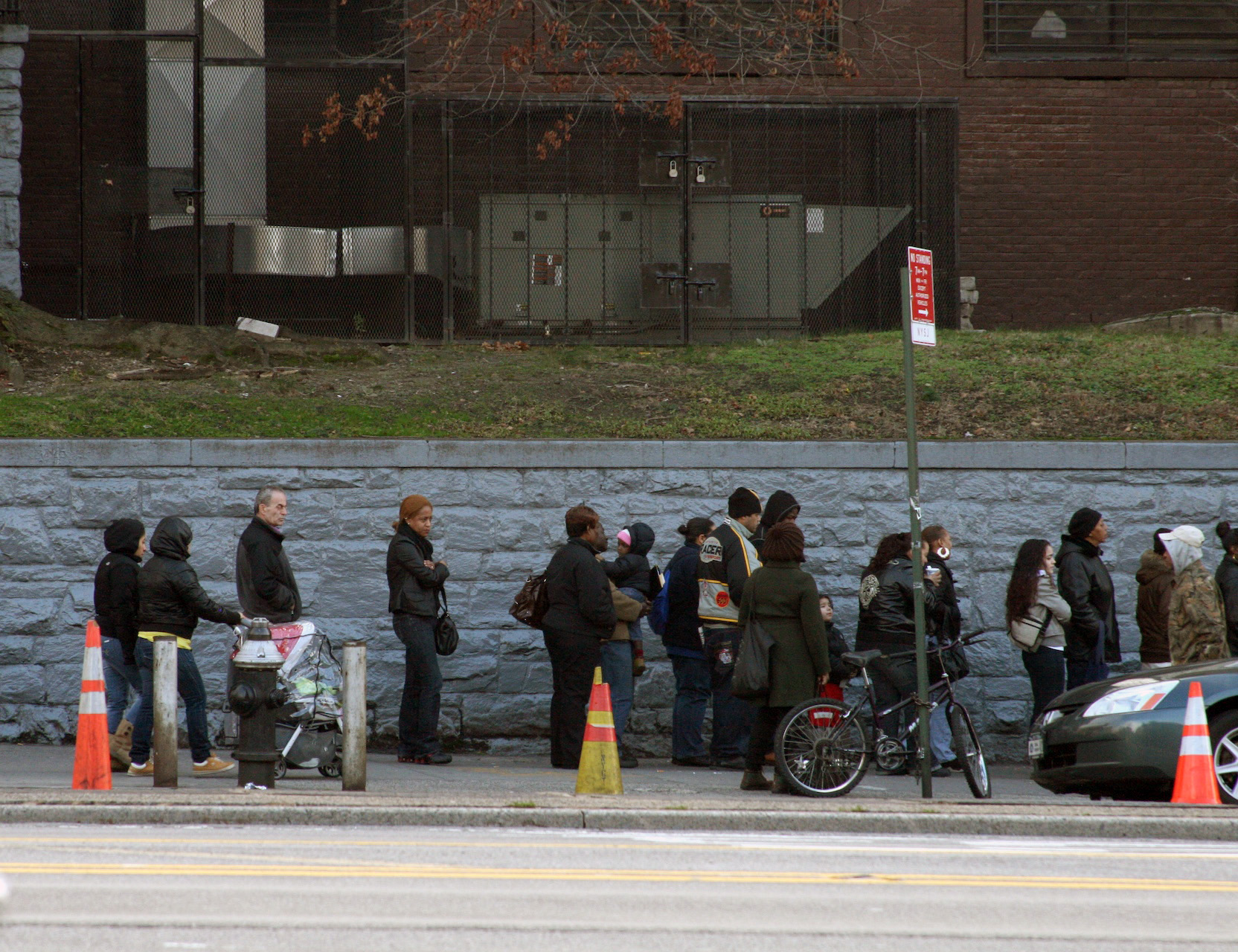Housing lawyers expected an avalanche of eviction filings as soon as New York’s pandemic eviction moratorium expired last January. The reality is quite different. The number of eviction filings over the past year is significantly lower than pre-pandemic levels both in the South Bronx and across the city.
However, the South Bronx leads the city in the number of eviction filings per resident. An analysis of data by the eviction lab shows the total number of evictions filed in 2022 was 6791, 7% of the total number for NYC despite the South Bronx having 2.6% of the population. The numbers are consistent with the rest of the Bronx.
Data was available up to the week of December 10.
“I think it’s a borough with folks struggling to get by,” Stacey Silliman, senior staff attorney at Bronx Legal Aid said. “Most simply can’t afford to pay anymore.”
About 80% of the cases that Silliman’s office handles are for non-payment she said.
Low-income residents, who by law should get free legal representation in housing court, might not get it. Silliman said her office, whose workload is governed by a union contract, has turned down tenants because they’ve reached their limited capacity “to deliver tenant capacity.”
“Each individual attorney sees five to six people a month,” Silliman said.
The amount of rental arrears also increased dramatically during the pandemic compared to pre-pandemic years. A report by the Furman Center, “Trends in New York City Housing Court Eviction Filings,” said the average amount of money sought in private nonpayment cases increased only 1% from $3,1444 in 2010 to $3,169 in 2017 across New York City.
“You know, pre-pandemic, maybe you would see a case where, you know, a high arrears case would be $15,000 to $20,000, and now you’re seeing cases that have over $30,000 [or] $40,000 and sometimes even more,” reported Matthew Tropp, director of housing at Bronx Legal Aid. “Being able to obtain that amount of money is really hard.”
Melrose resident Ana Galvez, who used to work as a cook, said she went several months without a paycheck in 2020 due to the pandemic lockdown, then the restaurant that employed her closed for good.
During that time Galvez sold water, fruits and homemade tamales and atole, a Mexican drink made of corn flour, to cover some expenses. But she said it hasn’t been enough to sustain herself and her 10-year-old daughter.
Restaurants were not allowed to resume business until phase 4 of the city’s reopening plan, with a limit in the number of diners allowed. As a result, Galvez said, her landlord filed for eviction because she is behind eight months of rent plus utilities.
“Our nightmare has just started,” Galvez said. She is fighting her eviction case with the help of lawyers she contacted through the Community Action for Safe Apartments (CASA), a tenant advocacy organizing project created by the non-profit New Settlement. It was through them that she met other tenants in the same situation.
The US Department of Treasury launched the Rental Assistance Program (ERAP) to help tenants who, like Galvez, accrued rents since or after March 13, 2020. The program distributed $2.4 billion as of last November to cover up to 12 months of rental arrears.
Payments were made directly to the landlord or property owner on tenants’ behalf. The program offers an additional three months of rental assistance if the household spends 30% or more of its gross monthly income to pay rent.
Galvez said the program covered only six months of rental arrears when she applied, then her lawyer filed for ERAP once more. The program shields tenants from evictions while it reviews their applications.
“I know I’m not going to get it,” Galvez said. “It was a [strategy] to buy me more time.”
But the program might be hurting small landlords. Robert Farina, Bronx Housing Court attorney who represents landlords, said that while most tenants applied for ERAP “in good faith,” there are some abusing the protections offered by the program.
Last fall, a group of 200 mom-and-pop landlords gathered outside Gov. Kathy Hochul’s Murray Hill Office to protest ERAP according to an article by The Real Deal. Some said that tenants don’t leave, even after settling for a much smaller sum of what they owe.
“[ERAP] is being called a ‘Get out of Housing Court free card,’” said Farina. “What happens is [that] tenants use this ERAP application because they know that by filing an application the case gets put on hold and you know [some] file the application the day before court.”
He also noted that there’s no law to provide legal assistance for low-income landlords.
“When it’s the landlord that needs [it] all they do is say you know what, you should get an attorney and they do nothing else,” Farina said. “There’s no program for landlords who need an attorney the way there is [for] tenants.”
But Bronx Legal Aid’s Tropp said “when you balance equities of what’s going on, there is a greater, much greater, number of tenants who are struggling right now.” Nearly two-thirds of NYC residents are renters, according to the NYC Department of City Planning.
“But you know, getting more rent relief or rent arrears money — it helps both,” tenant and landlord, Tropp said.
The NYS Office of Temporary and Disability Assistance announced that additional funds for ERAP will be added to the 2022-23 budget. As a result, applications filed up to Sept. 30 will be reviewed and processed.

